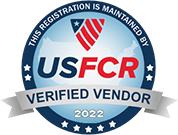A common issue we see with Service Desk or Triage level support teams that manage most inbound tickets is that many of these tickets or requests are repetitive or follow a similar pattern. Common issues include an AD account being locked out or a user requesting a password reset.
In these cases each time the ticket is raised, the analyst responsible must do the following:
- Create a ticket and fill out the required information
- Save the ticket
- Re-open the ticket
- Resolve/complete the ticket and then close it
Doing this task multiple times a day, every week, adds up to a lot of poorly utilized time that could be spent on more involved issues. The challenge preventing faster First-Call Resolution is related to the way the SCSM architecture is designed and the required workflows that must run to move a ticket through its status or stage. For example, a Service Request is a set workflow that the ticket will need to follow, and you may find yourself waiting for processing of the ticket to reach a certain stage before you can close it.
Faster First-Call Resolution is greatly assisted using templates for standard known issues. In many cases only a few fields would need to be changed from ticket to ticket. Automation of the close process and using templates in ticket creation is the key to reducing the effort and time taken on these tickets.
Automating First-Call Resolution
We suggest a two-pronged solution to reduce not only the time taken to log a ticket, but the time to close the ticket as well.
Define standard templates: In SCSM you can create work item templates which are the structure of a ticket with a predefined input. These might be things like Title, Description, Support Group, Priority, Area etc. — fields that your Analysts will be filling out every single time. You can review historic tickets to identify similarities of the input being entered. Wherever there is a standard entry, template it! Analysts can now focus on just filling in data that is always different like the Affected User, or special instructions.
Automate the open/close process: With a little bit of customization, we can remove the need for the analyst to close the ticket as this is becomes part of the ticket creation process. Routine tickets only need to be handled once – analysts open a ticket, enter the information and hit save!
Fig.1 – Opening ticket from a template.

Fig.2 – Completing details on form and saving

Fig.3 – Ticket is completed!

Try It Yourself!
Not every service desk environment will have the volume of repetitive, quick resolution tickets that make this solution viable. However, taking a process-centered approach to First-Call Resolution is a key goal for any service desk. Saving an analyst even 30 minutes a day will quickly add up over time. Ticket quality is also improved with standard templates reducing errors.
On that note – we have created a free community-based solution that is available for you to test and evaluate. The following link here will provide you with instructions and examples. Be sure to also join our Cireson Community Site and take part in discussions on other features and tips that can increase productivity!



